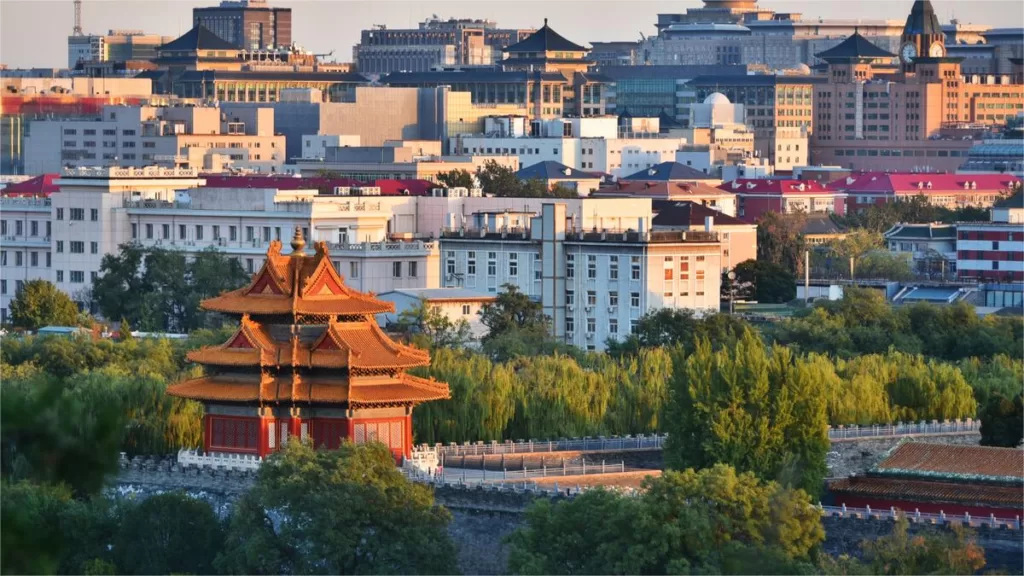The history of Beijing is a rich tapestry of ancient civilizations, imperial dynasties, political upheavals, and cultural advancements that have spanned over three millennia. This sprawling city, which now serves as the capital of the People’s Republic of China, has witnessed a remarkable evolution that has shaped not only its own destiny but also the history of China as a whole.
Early History:
The roots of Beijing’s history can be traced back to prehistoric times when the region was inhabited by various tribes and small settlements. Archaeological findings suggest that the area that is now Beijing was inhabited as early as the Paleolithic era, some 500,000 years ago. Over time, it evolved into a more organized society with agricultural practices and rudimentary forms of governance.
Around 1045 BCE, during the Zhou Dynasty, Beijing and its surroundings were part of the state of Yan. It was not until the Warring States period that the city began to take shape as a significant regional center. The state of Yan established Ji, as Beijing was known then, as its capital.
Imperial Beijing:
Beijing’s destiny underwent a dramatic transformation during the Ming Dynasty (1368-1644). The third Ming emperor, Yongle, moved the capital of China to Beijing in 1403, and he oversaw the construction of the iconic Forbidden City, a vast palace complex that would serve as the imperial seat of power for nearly five centuries. This move marked the beginning of Beijing’s era as an imperial city and set the stage for its emergence as a cultural and political epicenter.
The city’s name also changed to “Beijing,” meaning “Northern Capital,” reflecting its newfound status as the political heart of China. The Ming Dynasty was known for its ambitious construction projects, which included the construction of the Great Wall and the Temple of Heaven, both of which still stand as symbols of China’s imperial legacy.
The subsequent Qing Dynasty (1644-1912) continued Beijing’s importance as the imperial capital. The Qing emperors expanded the Forbidden City and added new architectural wonders like the Summer Palace. This era was marked by a period of relative stability and prosperity, but it also witnessed external pressure from Western powers, including the Opium Wars and the Boxer Rebellion.
Challenges and Transformation:
The late 19th and early 20th centuries were tumultuous times for Beijing. The Qing Dynasty, weakened by internal corruption and external threats, fell in 1912, leading to the establishment of the Republic of China under the leadership of Sun Yat-sen. Beijing became the capital of the new republic and played a pivotal role in the early years of China’s modernization efforts.
However, Beijing’s stability was short-lived. In the 1930s and 1940s, the city experienced the Japanese occupation during World War II, followed by the Chinese Civil War between the Chinese Nationalists (Kuomintang) and the Chinese Communists, led by Mao Zedong. Ultimately, the Communists emerged victorious in 1949, and Beijing once again became the capital of a united China, the People’s Republic of China.
The Modern Era:
The founding of the People’s Republic of China marked a new chapter in Beijing’s history. The city underwent significant political, social, and architectural changes. Under the leadership of Chairman Mao, Beijing experienced various campaigns, such as the Great Leap Forward and the Cultural Revolution, which left a profound impact on Chinese society. During these decades, many historic sites were damaged, and traditional Chinese culture was suppressed.
In the late 20th century, under the leadership of Deng Xiaoping, China embarked on a path of economic reform and opening up to the world. Beijing, along with the entire country, began to modernize rapidly. The city’s infrastructure was transformed, with the construction of modern skyscrapers, extensive subway networks, and a focus on education and scientific research.
Beijing also experienced a cultural revival, with an emphasis on preserving and promoting its rich history and heritage. Historic sites were renovated and protected, and the city played host to the 2008 Summer Olympics, an event that showcased China’s emergence as a global superpower.
In recent years, Beijing has continued to evolve as a global hub, embracing innovation, technology, and international exchange. It has become a symbol of China’s modernization and its aspirations on the world stage.
The Challenges of the 21st Century:
While Beijing has achieved remarkable progress, it also faces various challenges in the 21st century. Rapid urbanization has led to issues such as environmental pollution, congestion, and housing shortages. The city has had to grapple with concerns about air quality and environmental sustainability.
Beijing has also been at the center of discussions about human rights, censorship, and political repression. The Chinese government’s approach to governance has raised concerns on the international stage, and Beijing has faced criticism over issues like internet censorship and the treatment of ethnic minorities.
The city is striving to address these challenges while continuing to assert its role as the political, economic, and cultural center of China. It is home to some of the world’s top universities, cutting-edge technology companies, and a thriving arts and cultural scene. Beijing’s historical landmarks, including the Forbidden City, the Temple of Heaven, and the Great Wall, remain significant attractions for both domestic and international visitors.

